History of Ostashkov
14th Century
Foundation
In 1371 the settlement of Klichen, located on the island of the same name just to the north of the modern-day city of Ostashkov, was first mentioned in a letter from Grand Duke Algirdas of Lithuania to the patriarch in Constantinople. In 1393 Klichen was razed to the ground by Novgorodians. A legend states that there was only one survivor - a man called Ostashko, who then established a new settlement on the mainland to the south of the island which later became known as Ostashkov in his honour.
16th Century
St Nilus of Stolobny and the Nilo-Stolobenskaya Hermitage
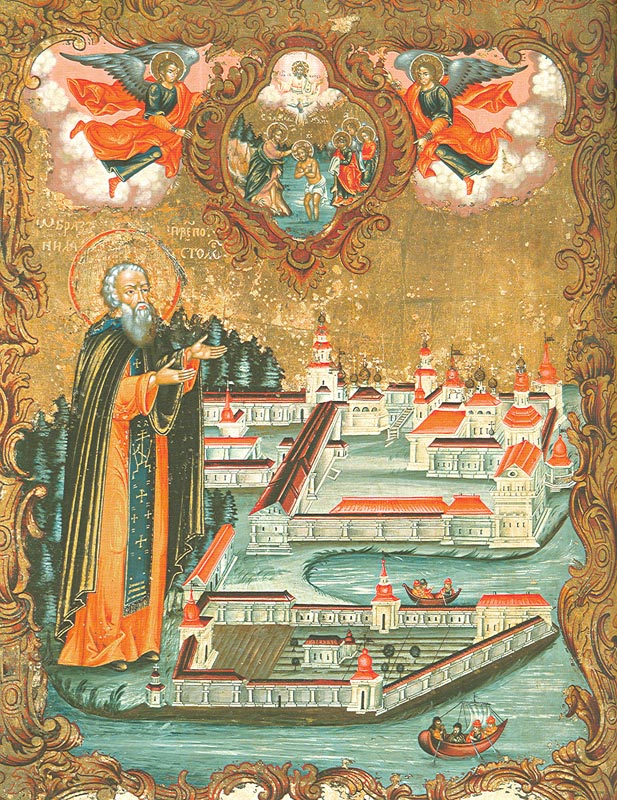
In 1515 a monk by the name of Nil quit his monastery to live a life in prayer in a remote forest surviving on grass and acorns. It is said that when robbers once came to rob him, Nil simply approached them with an icon and the robbers ran off in fear. Nil's reputation as a greatly spiritual man grew and more and more people came to visit him. This in turn forced Nil to move on to a more remote spot in 1528, when he settled on the island of Stolobny in Lake Seliger to the north of Ostashkov. In 1555 Nil died and in 1594 Patriarch Job established a community of monks on the island which was named the Nilo-Stolobenskaya Hermitage in honour of Nil.
17th Century
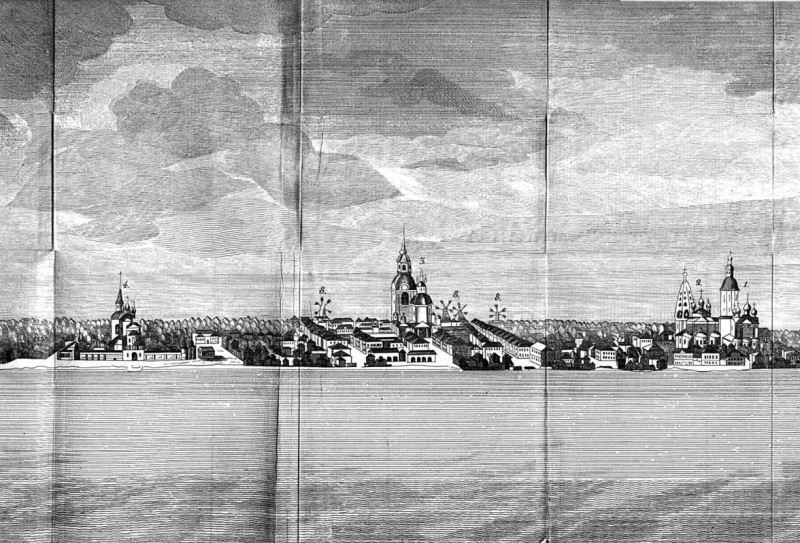
During the Time of Troubles, Ostashkov's stockade, which was built in 1587, was able to fend off the Polish interventionists in 1610, who were only able to ransack the surrounding areas. The stockade was rebuilt twice since then but when it burned down in 1711 it was decided there was no need to rebuild it.
18th Century
Reform
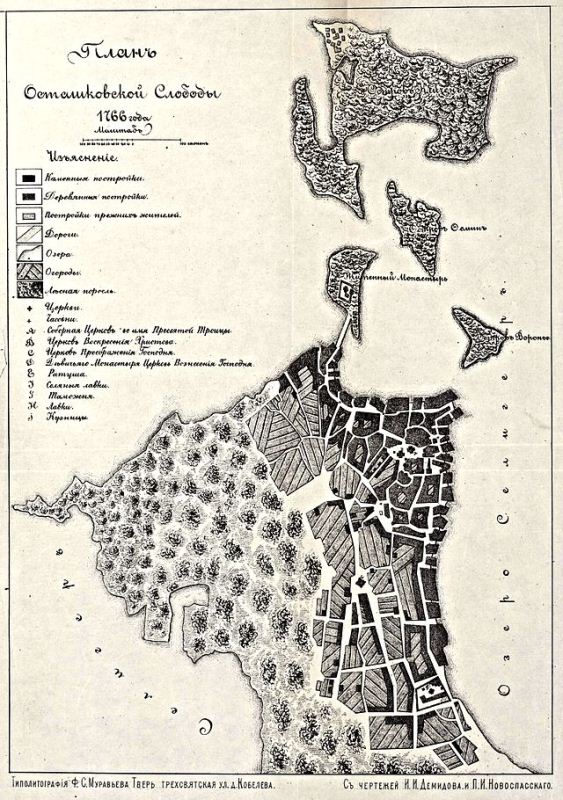
In 1772 Ostashkov became the regional centre of the Ostashkov District of the Tver Province (later renamed the Tver Viceroyalty and Tver Governorate. In the same year a regulated general plan for Ostashkov was approved by Empress Catherine the Great, which introduced a grid system for the city's layout.
19th Century
Development
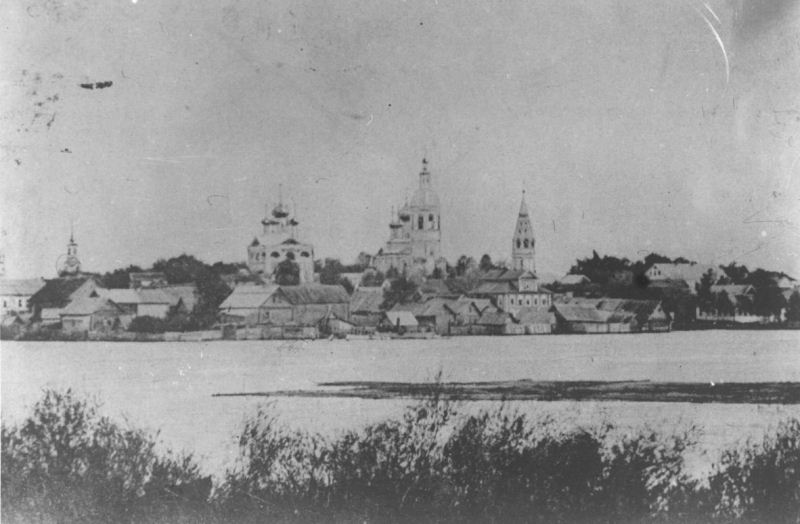
The 19th century saw many new stone buildings being built in the city in the classical style. New social amenities were also opened including a hospital, a library, a theatre, a bank, a school and a college. In terms of industry the city also developed and Ostashkov became known for its shoemaking, fishing production, blacksmiths and leatherwork - in 1895 there were 20 tanneries in the city.
Pilgrimage to the Nilo-Stolobenskaya Hermitage
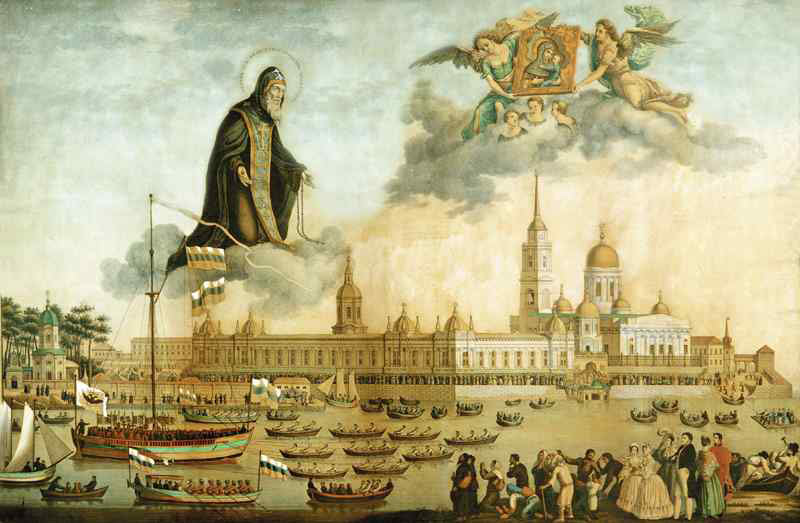
During the 19th century the fame of the Nilo-Stolobenskaya Hermitage reached its peak and it became one of the most revered monasteries in Russia, receiving over 1000 pilgrims a year, who came to prayer at the tomb and at the 17th-century wooden carving of St Nilus. As a result a trade in making small wooden statuettes of St Nilus for sale to the pilgrims sprung up in the surrounding area. Even Emperor Alexander I came on pilgrimage to the monastery in 1820. In 1858 a new embankment was built to accommodate the boats bringing pilgrims to the island.
20th Century
Post Revolution
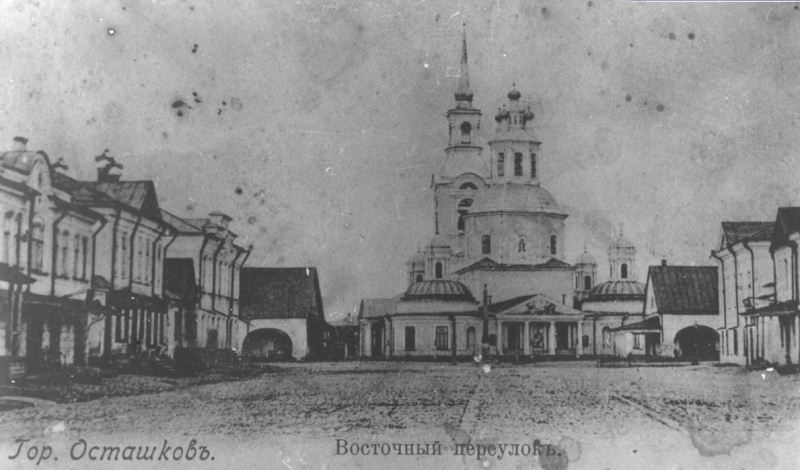
After the Revolution, all of Ostashkov's churches and monasteries were closed down. The central Transfiguration of the Saviour Church was knocked down, leaving only its bell tower. Other former churches were converted into workshops or museums. The Nilo-Stolobenskaya Hermitage was closed in 1927. Over the next decades the former monastery's buildings were used to hold a children's prison camp, a Polish POW camp, a military hospital and an old-age persons home.
Tourist Resort
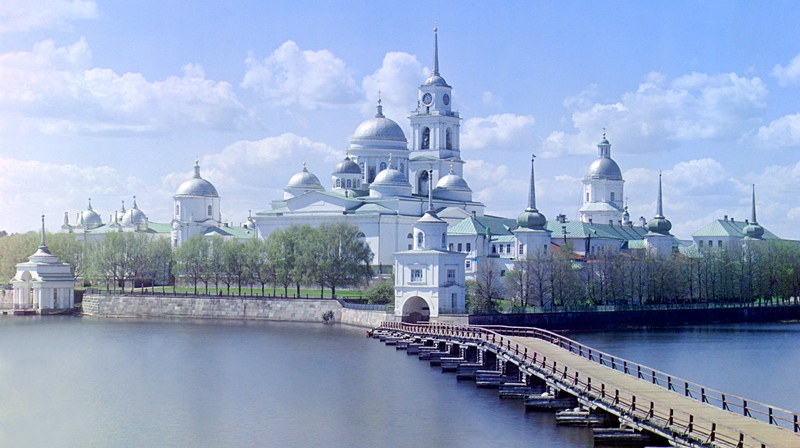
In the 1960s Ostashkov was redeveloped as a tourist resort on the bank of Lake Seliger, which became a popular destination for campers. New hotels and wharfs were built, as well as a bus station. Even the buildings of the former Nilo-Stolobenskaya Hermitage were converted to be used as a tourist centre.
In 1990 was the former Nilo-Stolobenskaya Hermitage was reopened as a monastery and in 1995 the relics of St Nilus were returned there. In the early 2000s much restoration work was performed and during his visit in 2013, President Putin promised more funds would be allocated to return the monastery to its former glory. In 2010 the list of historical cities of the Russian Federation was drastically reduced, but Ostashkov kept its place on that list due to the large amount of pre-Revolutionary buildings which have survived to this day in the city centre.

 History
History